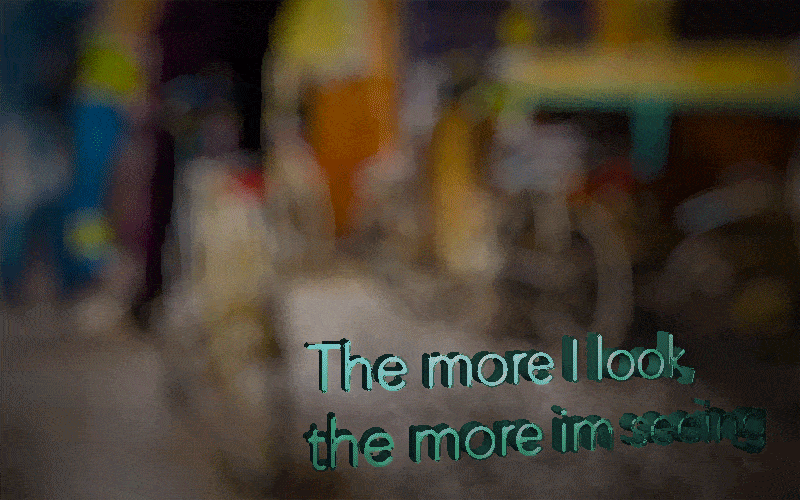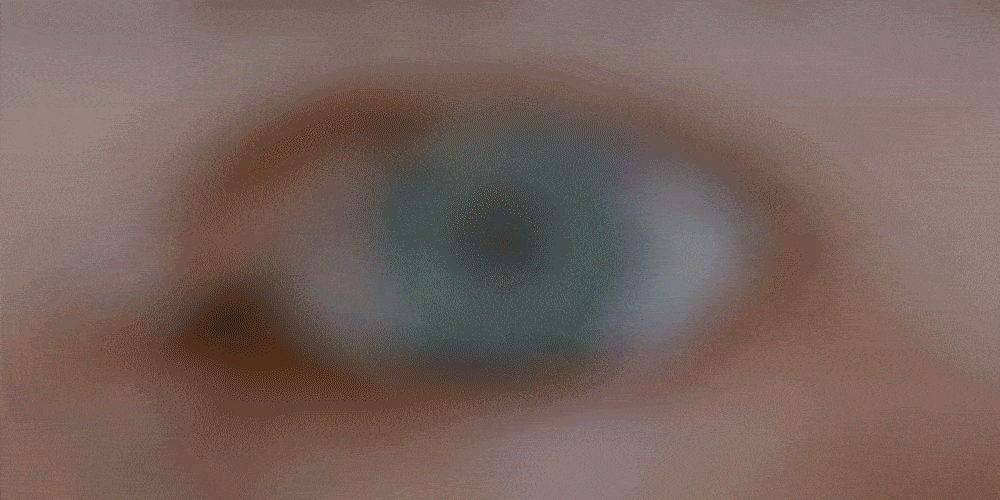My family called a popular detergent we used in the ’90s, “Klin” for a long time until I pointed out, in an argument, that it was in fact “So Klin” a shorthanded variation of the phrase “So Clean.” On the 28 gram (1 oz) packs we often bought, the “So” was a small prefix in red Times New Roman font, perched on a boldly spelt “Klin” in bright yellow. They had somehow missed it. I didn’t. I didn’t miss a lot of things.
The first signs a child has safely crossed over from the reality infants exist in before they leave their mother’s bodies are a combination of things. Key amongst them is its cry. The sharp, high-pitched wailing announcing an infant’s presence, and a mother’s relief. Science says this cry is vital for a
number of reasons: expansion of the infant’s lungs, breathing in its own first bouts of air, and getting rid of amniotic fluid collected in nasal passages. I arrived quietly. My mother says I came out nodding. No cries, no capacity to draw in my first bout of air, what would turn out to be an innate disinterest to use my mouth and a keen eye.
•
I cross a pedestrian bridge ten times every weekday to and from work. Spread out like a double-edged Y, the bridge is an animated 25 meters (82 ft) stretch of concrete pillars and worn-out metal railings. I have come to expect some regular faces. A woman who wears a dull orange scarf, matching buba, and who greets me every day as I take the ascending flight of stairs in twos. I meet her in the same position almost every day —clutching a broom, sitting on a stair which forms a clean-cut line between the sweeping she’s done and the one she’s yet to do and which will be paid for by the kindness of strangers. Sometimes, our eyes meet. I say good morning and she mutters a reply. On the aisle of the bridge and leaning on the left side of the rail, sits a dark-skinned woman who wears a veil and has tribal marks on both cheeks — short ones that end before they start. Most days, she greets me with a wide smile. “E kuse,” she replies whenever I say good morning. “Well done.” On some days, her eyes are fixated ahead of her
on nothing in particular and because our eyes do not meet, I keep my morning greetings to myself. On rare occasions, she mutters a plea for some change. The gaunt man who sits on the landing of the descending flight of stairs wears his sadness like a custom made outfit. Each morning, he wobbles on his knees sweeping sand and dirt, residues of all the daily crossings across the bridge.
One morning in February, while making my way down the aisle trying to catch my breath, a motorbike is heading towards me but it takes a moment to register. And stops me abruptly once I do. The bridge, which has ramps on both ends, is more than ten ft above a busy double dual carriage road with cars whizzing by as fast as the light traffic can allow. There’s a young woman on the bike. Her eyes are firmly shut, one hand clenched over her mouth like she’s trying to stop herself from screaming. The bike’s incessant honking as it zigzags across the aisle jars people to a halt, as they turn around and give way in one swift sequence of realization. I am partly amused. In the evenings, after the stairways and aisle have morphed into a market, its muted energy mirrors that of Tejuosho a too-bubbly market a few miles ahead — second-hand ladies’ footwear strewn on a large narrow plastic bag and manned by an exuberant salesman, a man who greets you at the landing dangling a pair of trousers in your face, cheap, counterfeit perfumes displayed on a bright blue tarpaulin, a cereals-and-sundry store, onion bulbs in heaps of fours and fives, potent cocktails against insects and rodents and even a phone shop (second-hand phones stacked into a heap in an old, striped bag).
With all the movement along the bridge — the haggling while trying out new shoes, the ones who perch on the railings to watch a football match in a spacious compound across the road or just to take in the sight of them mustard yellow and red lights of evening traffic — people barely cast a glance at any three of the bridge’s regular occupants. And sweepers. They increase their pace. Veer off at awkward angles hand over petty change without looking.
Inattentional blindness. A cognitive behavior Siri Hustvedt describes in “Notes on Seeing”, an essay from her book Living, Thinking, Looking. It is blindness by virtue of focus; the more attention you pay to a particular subset of a whole, the more likely you are to completely miss another part of that whole. In “The Drama of Perception,” Hustvedt makes a strong case for time and looking: the more you look at a thing, the more you see; a theory I had been trying out in my writing for about a year. How is there more to see when you have looked at the same thing for 30 days in a row? Save the ever-changing mundaneness of living, a new face cap today, a different turban tomorrow, what new characteristics did time reveal about these three I had become strangely and aloofly familiar with?

The woman who mutters a greeting at the ascending flight of stairs actually wears a faded orange polo shirt; a faded orange and brown patterned Ankara wrapper — or dirty since she’s on the floor most of the time — loose, around her waist. A brown, shabby scarf is tied over her hair. She doesn’t wear a buba. One day, when I hand her a 200 naira note on my way to work, she offers an almost genial smile and I look at her a little longer. Her cheeks are chubby, and she is pretty despite vestiges of a disability. I don’t look for too long to notice anything more. The woman who always greets me with a smile holds one again this morning. She wears a blouse and wrapper that are almost matching because of their leopard print-type patterns. Her hair is covered in a similar hair turban and a blue scarf is draped over her shoulders. I notice there’s a stick beside her resting on the railing of the bridge. Only, a few days after, it is not a stick but one of a pair of crutches. The more I look, the more I’m seeing.
The lonesome man at the descending end of the bridge is wearing a branded shirt and a black pair of jeans. A red face cap shields his face from the fiery sun and he holds up himself on his right hand protected from the concrete stairs by one of a pair of rubber slippers. He sweeps with his left hand, moving himself around with his right hand and what’s left of his wilted legs. There are bold tribal marks on his face, long enough that they cover most of his right cheek to form a lopsided hash. I hadn’t seen that
before and am taken aback by the audacity of the marks. A few days after, I come close and look long enough to count four of them, evenly spaced out across his cheek. The adjacent lines that seemed to form a hash are in fact, thin lines of facial hair. The more I look, the more I’m seeing.
“Do tribal marks have meanings?” I ask my friend in a text a few steps after I’ve descended the bridge and wait for his reply. It’s midnight on his side of the world.
•
“To look, and not see; an old problem. It usually means a lack of understanding, an inability to divine the meaning of something in the world around us,” writes Hustvedt in “Notes on Seeing”. To not look is, therefore, a seeming nonchalance towards divination into the world around us in search of its meaning. I’ve continued to ponder about the hasty feet and fixated stares away from the bridge’s cleaners when pedestrians pass by. I’ve also wondered about my own inability to look long enough. What do these say about us? About how we deal with vulnerabilities that aren’t ours?
To look long enough at the gaunt man with the tribal marks or the chubby-faced woman with an almost genial smile is to see the extent of vulnerability possible in our humanity. Given a different set of realities, she may have been giving this account and I, seated there with a broom stump, being handed off-puttingly, the littlest of notes, monies people give not out of charity but mostly to feel like they have done something, ever so little, to ameliorate another’s suffering.
John Berger, in his essay “Photographs of Agony” in About Looking, while discussing the dearth of information in the media about the Vietnam War and the role of photographs in letting people in on the atrocities of the war points to an image by photojournalist Donald McCullin. It is an image of an
old man squatting with a child in his arms. Both have been pictured bleeding profusely. While the vulnerabilities of the bridge’s cleaners and of the man and the child in the photograph must differ in some measure, Berger is right in saying such photographs shock us into reality, the lived reality. The bridge is a lived reality, unshielded by the distance of photographs; not gory, but visceral all the same. Looking, in this instance, allows us into the suffering of others.
“We are filled with either despair or indignation. Despair takes on some of the other’s suffering to no purpose. Indignation demands action,” Berger writes. It is this despair that fixates the eyes of pedestrians forward along the animated bridge and causes mine to falter time and time again. It’s the helplessness and purposelessness of what to do with the suffering and vulnerability of another, the knowledge they’ll always be there every morning, sweeping and counting on the kindness of strangers who have absorbed in despair, the suffering of others far too often to do anything with it. •




